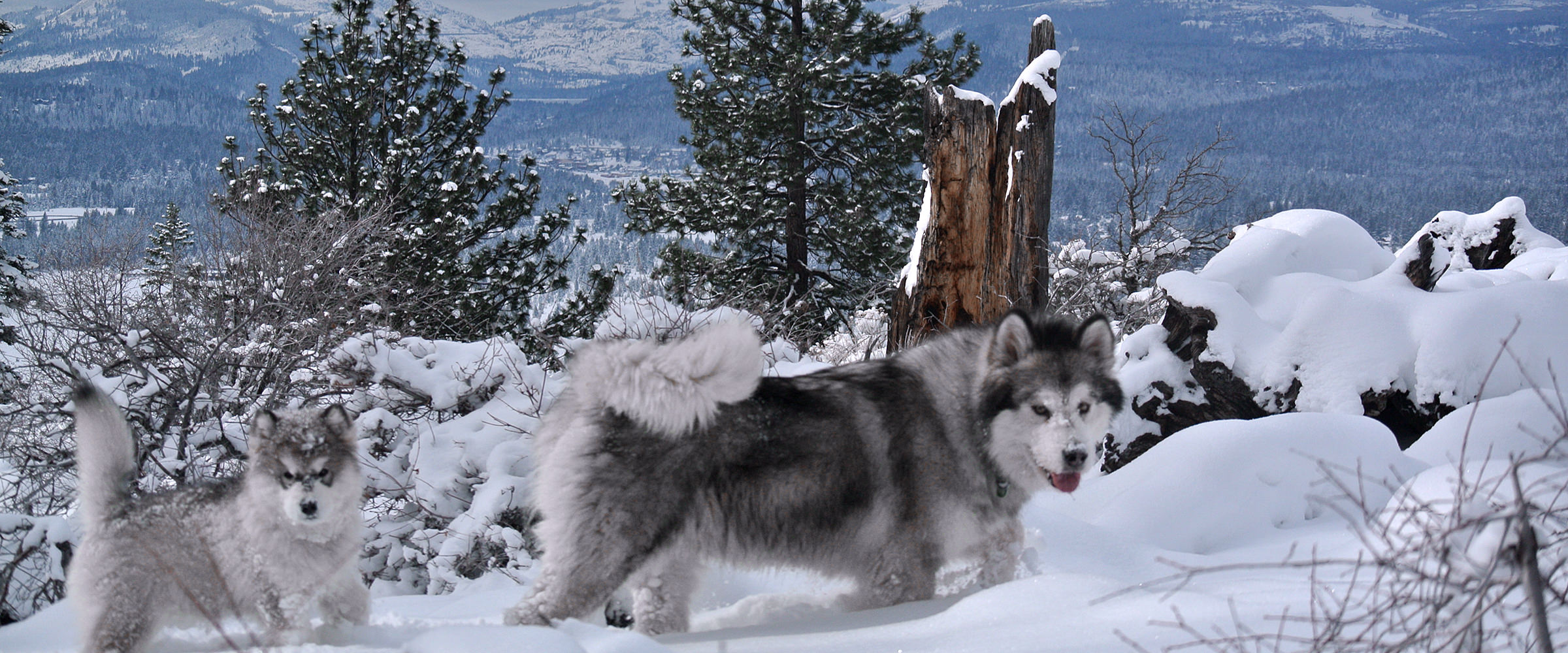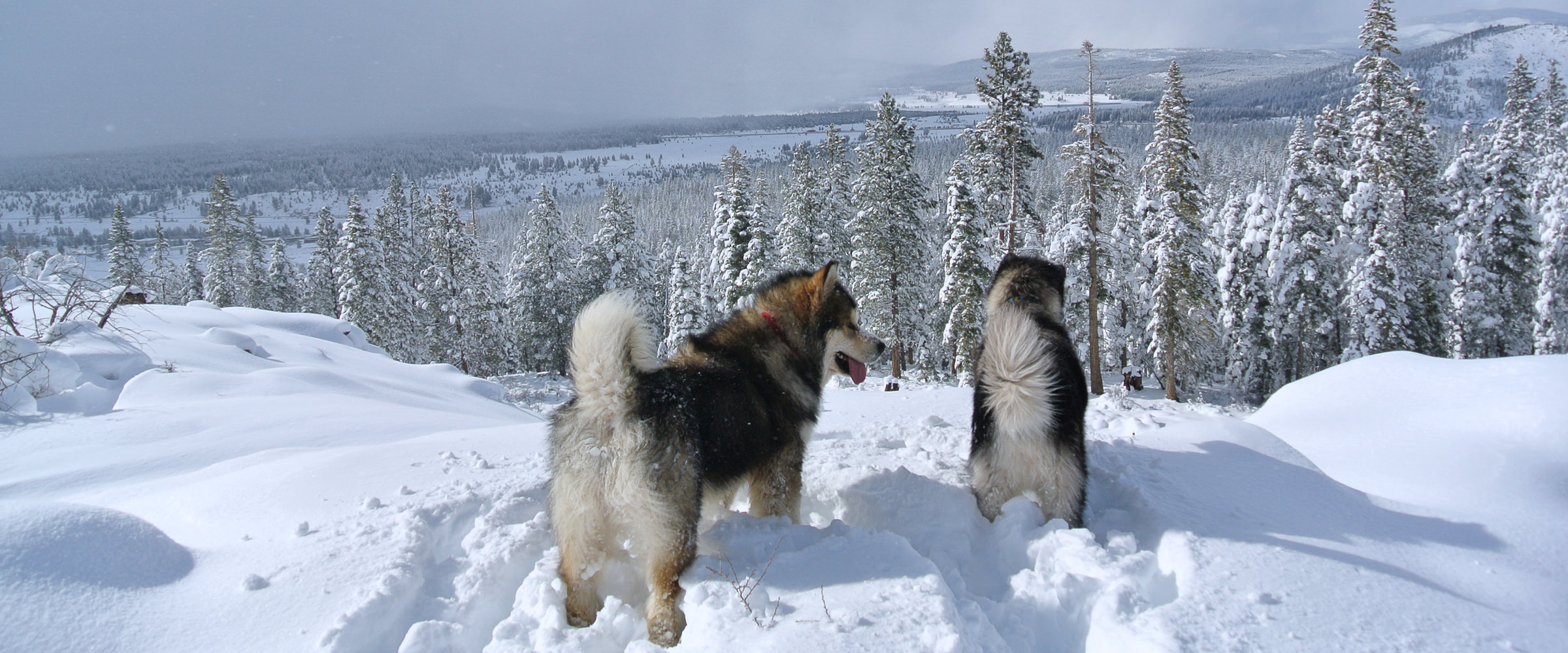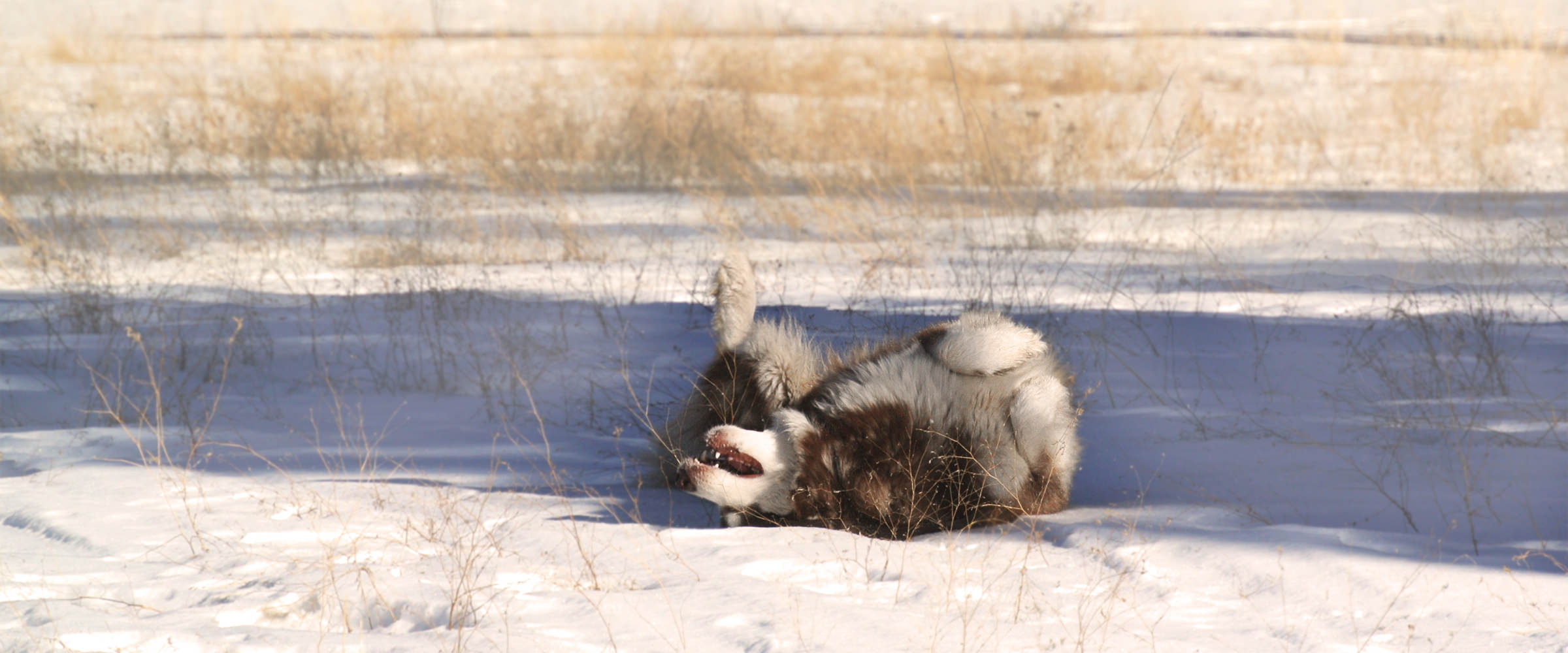Alaskan Malamute Breed Information
Snowlion Alaskan Malamutes are purebred, AKC registered Malamutes. Our dogs are bred in accordance with the AKC breed standard which describes the ideal Alaskan Malamute in terms of its original purpose as a working sled dog in the arctic. Adhering to the AKC standard ensures that today's Alaskan Malamutes stay true to the origins of this breed and retain the ability, temperament and structure to preserve the breed's working heritage.
A well-balanced athletic Alaskan Malamute capable of covering a great distance with a heavy load is a moderately-built dog, not overly-large (lacking endurance). While there is some variation in size and weight among Alaskan Malamutes, purebred Alaskan Malamutes will generally range between 23 to 25 inches at the withers and 75 to 85 lbs in ideal (lean) working condition. Blue eyes are a disqualification.
The Alaskan Malamute Standard How to measure your Alaskan Malamute’s height
Malamute Size And Weight
Size and weight are two traits that many Malamute pet owners tend to focus on, but overfeeding puppies to promote rapid growth & weight gain is harmful. Overweight, "plus-sized" Malamutes are prone to crippling joint diseases like hip & elbow dysplasia which require expensive surgeries to spare the dog from a lifetime of arthritic pain.
Obesity, a serious condition affecting a high % of pet dogs in the US, also leads to shortened lifespans. Please keep your Malamute lean--there should be *no* excess weight on working breeds like Alaskan Malamutes. To gauge your dog’s body condition, you need to feel your dog’s rib cage and pelvic bones with your hands. You will easily feel the bony structure under a thin layer of fat if the dog is at a good weight.
Like BMI charts, your Alaskan Malamute’s weight should correspond to its height, roughly increasing in 5 lb increments per inch. An Alaskan Malamute who weighs 150 lbs without being overweight would have to be 38 inches tall at the withers—the height of a Great Dane!
Keeping your Alaskan Malamute lean & fit is so important for its long-term health. Bigger is definitely not better!
Read more: "beyond-the-belly-the-health-consequences-of-pet-obesity"
Alaskan Malamutes & Health Issues
Alaskan Malamutes are generally a healthy breed but problems can crop up if the breeder you purchase your dog from hasn’t done the recommended health screening by OFA --at a minimum, parents and grandparents should be free of hip dysplasia and hereditary eye disease. In addition, the breeder should have all the puppies examined by a veterinarian before they are sold. As DNA tests are developed for identifying carriers of genetic disease, responsible Alaskan Malamute breeders will make use of these screening tools. Recently a test for polyneuropathy (PN) has become available.
Hereditary disease is just one component—environment including nutrition, over-vaccination, use of tick/flea pesticides, obesity, early spay neuter all these factors interact and will affect your Alaskan Malamute’s longevity and its risk of chronic disease. Early spay-neuters are thought to contribute to common endocrine disorders that develop in middle age including hypothyroidism and Cushings. An alternative approach to sterilization is to remove the uterus but spare the ovaries (a source of hormones) and in male dogs, a vasectomy instead of castration.
Adopting an Adult Alaskan Malamute
Sometimes Alaskan Malamute breeders will place a dog that is not competitive in the show ring, but would be a wonderful family pet. Breeders also take back dogs they’ve bred that need new homes—usually due to divorce, but any changing family circumstances can put an Alaskan Malamute at risk. Occasionally retired show dogs may be placed in exceptional homes to be enjoy retirement as an ‘only child.’
Well-run Alaskan Malamute rescue groups are also a good source for accquiring purebred adult Alaskan Malamutes. Experienced Malamute rescue groups (like responsible breeders), do a good job of evaluating the temperament of individual Alaskan Malamutes and will advise the potential buyer if the dog is good with cats, young children or other dogs. While many of these Alaskan Malamutes were pulled from shelters or puppy mill busts, they often receive some remedial training by rescue personnel and foster homes—all malamute-experienced folks who really love the breed and understand what it takes for a successful placement.
A list of Alaskan Malamute Rescue groups.
Regardless of where you get your Alaskan Malamute, please think carefully whether you are equipped to handle a strong, stubborn, intelligent, independent breed for 10-14 years. Either way, if you are getting an adult Malamute from a breeder, rescue group, or shelter, you will need to plan for veterinary expenses and take the time to attend training classes with your new canine friend. Patience, discipline, lots of love and understanding will help your Alaskan Malamute get settled in its new home.










